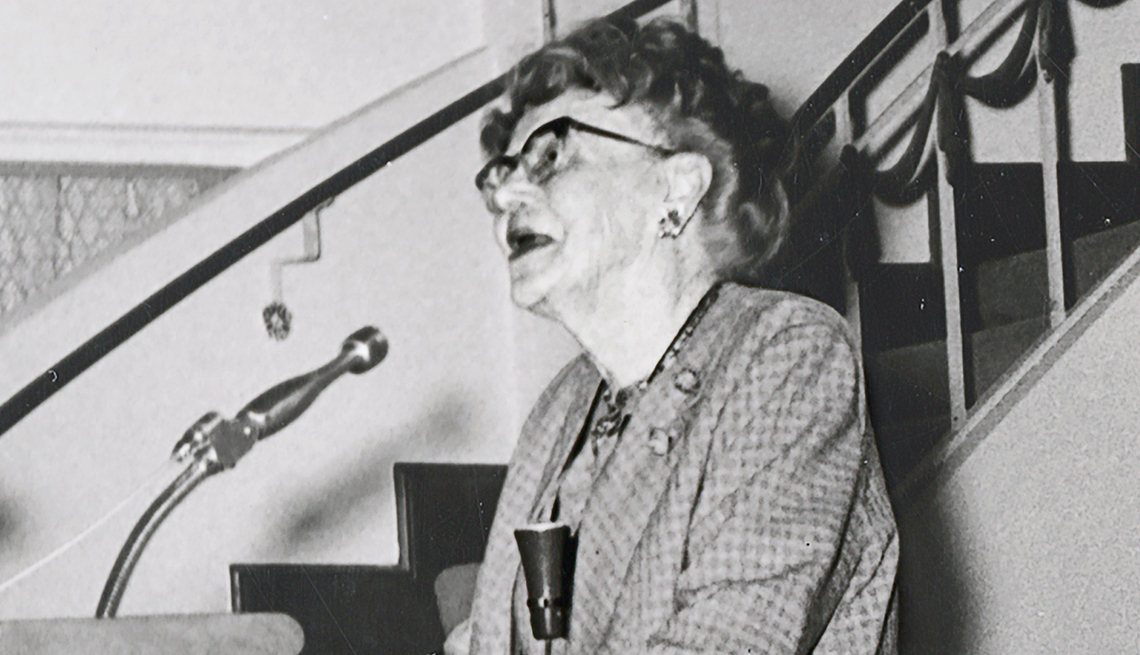AARP Hearing Center
In 1947 Ethel Percy Andrus was a retired teacher in her mid-60s — an age when workers often faced mandatory retirement. Andrus, who worked on welfare issues for the California Retired Teachers Association (CRTA), knew that many teachers were unsettled by this forced transition. “The retired teachers were heartsick,” she wrote, “often lacking purpose, self-confidence and faith.”
While the CRTA was busy helping retired teachers across the state, Andrus had begun to imagine how much more a national organization could accomplish for teachers’ welfare. It would be a daunting task to unite independent state organizations countrywide: Andrus had to employ her formidable powers of leadership and persuasion to convince them that they should join forces and work cooperatively on a national agenda. Her persistence paid off, and on Oct. 13, 1947, the National Retired Teachers Association was founded in Berkeley, Calif., with its first stated purpose “to promote the professional, social and economic status of retired teachers.” Dues were just $1.
Andrus, who was elected as president, and her friend and fellow educator Ruth Lana ran NRTA from the house they shared in Glendale, Calif., with Andrus’ mother and Lana’s daughter. In those early days, their main office was a little breakfast room next to the kitchen.
Legislative victories
The numbers of members and legislative victories grew, including a successful campaign to exempt retirement income from federal taxes. In 1953 Andrus testified before the House Ways and Means Committee that the annual income taxes left some retired teachers without enough money for living expenses, and “some are viewing with hopeless dismay the gulf narrowing between the dignity of self-respecting support and the shock of acknowledged indigence.” Congress passed an NRTA-supported bill shielding up to $1,200 of retirement pay from federal income tax for retirees not covered by Social Security.
Communal living
As NRTA made its mark, Andrus was also dedicated to another passion project: the establishment of a national retirement home. With some philanthropic financial support, Andrus was able to purchase a property in the lovely town of Ojai, in a bucolic setting some 80 miles northwest of Los Angeles. Known as Grey Gables, it opened in 1954 as the first national retirement home for teachers. It would be a pioneering new model; Andrus wrote, it’s “not an old folks’ home, nor is it a rest asylum. It is a vital, delightful home for the creation of new days, new futures and the expansion of old enthusiasms.”
Andrus; Ruth Lana; Andrus’ sister, Maud, and Maud’s son and granddaughters would eventually all live at Grey Gables.































































